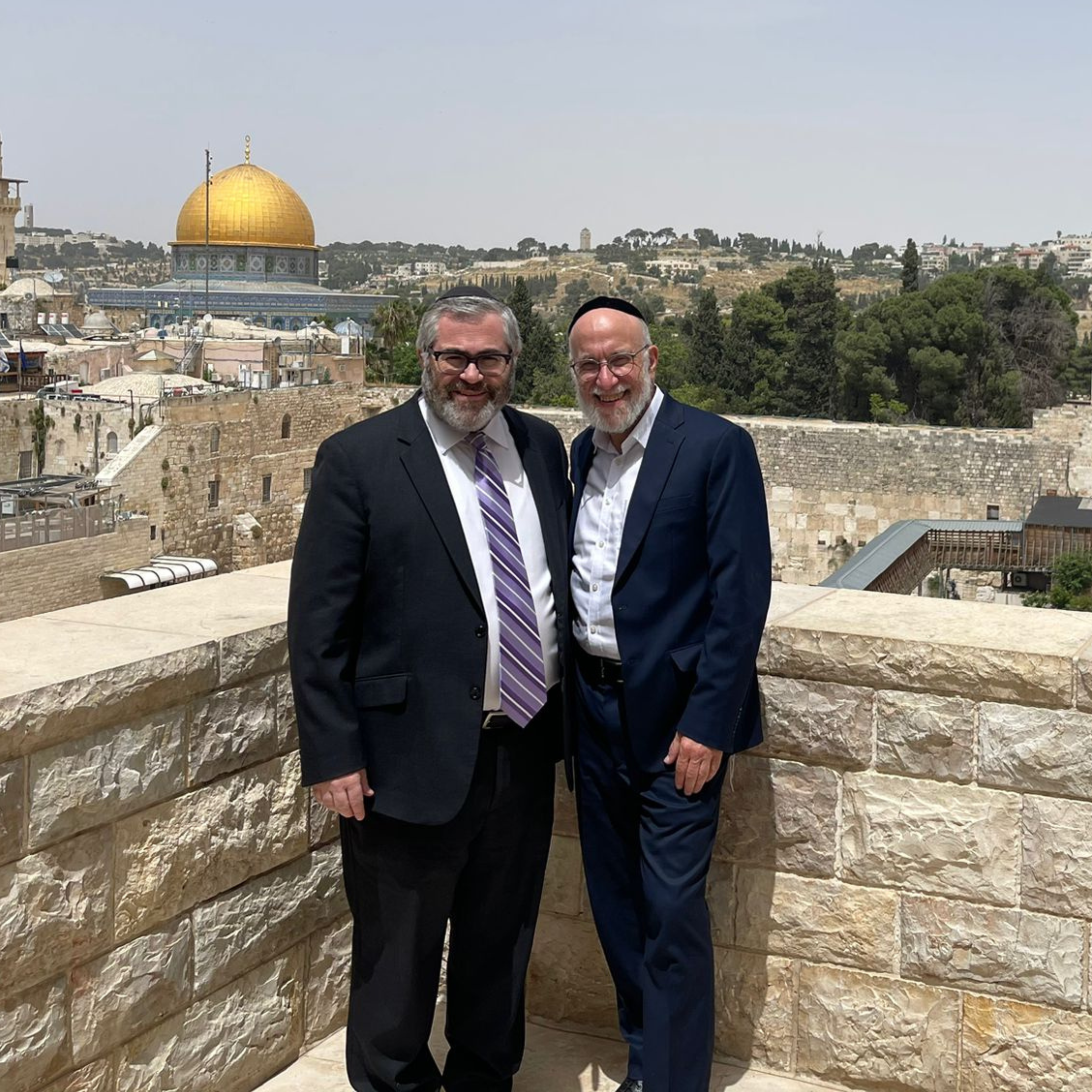Stone or Stones
When Yaakov lay down to sleep at Har Hamoriah, he placed multiple rocks around his head (Bereishit 28:11). When he awoke, the Torah tells us that he used the one rock (he had set by his head) to build a matzeiva (monument) (Ibid 28:18.). First, we read of “stones,” in the plural, then of “the stone,” in the singular. Which one was it? Did Yaakov use many stones or just a single one?
Rashi (quoting Chullin 91a) explains that each rock wanted the honor of supporting Yaakov Avinu’s head. The stones began quarreling, saying, “Upon me shall this righteous person rest his head.” To satisfy them, Hashem fused them into a single rock that served as Yaakov’s pillow. Hence, when Yaakov awoke, he “took the stone” (in the singular) since all the stones had become one.
The Message
Rav YY Jacobson (“The Battle of the Stones,” TheYeshiva.net) asks:
What is the symbolism behind this imagery? What is the meaning of stones quarreling with each other and then reaching a state of peace by congealing into one? One more obvious question: How did merging diverse stones into a single entity satisfy their complaint? Even after the stones congealed into a single large rock, Jacob’s head rested on only one part of the stone. So why didn’t the other parts of the stone lament that his head was not on them?
Rav Jacobson quotes the Lubavitcher Rebbe, who explained:
The fighting between the stones was not caused because each one wanted the tzaddik’s head; it was because they were separate stones. When the stones become one, the fighting ceases because when you feel one with the other, you don’t mind if the head of the righteous one rests upon him. His victory is your victory; his loss is your loss because you are one.
The episode with the stones reflects a profound spiritual truth about human relationships. Many conflicts—in families, communities, synagogues, organizations, corporations and movements—stem from everyone’s fear that someone else will end up with the “head,” and you will be “thrown under the bus.” But we can view each other in two distinct ways: as “diverse stones” and as a “single stone.”
Both are valid perspectives and fair interpretations of reality. The first is superficial; the second demands profound reflection and sensitivity. Superficially, we are indeed separate. You are you; I am I. We are strangers. I want the head; you want the head. So we quarrel. On a deeper level, though, we are one. The universe, humanity, the Jewish people—constitute a single organism. On this level, we are indeed part of one essence. Then, I do not mind if you get the head because you and I are one.
Initially, the stones operated on a superficial level of consciousness, thus quarreling about who would get to lie under Jacob’s head. But Jacob inspired in them a deeper consciousness, allowing them, for that night, to see themselves as a single stone, even while they were in different positions.
Achdut
This is the basis of true achdut, unity.
We often experience achdut in a technical, utilitarian way: we come together to face a common enemy or accomplish a mutual mission.
Meaningful achdut is rooted in a deeper principle and inspired by a higher goal. It reflects our recognition that we are all existentially one organism with one soul. This is how the mefarshim (Ritva Yevamot 13b, Gur Aryeh Devarim 14:1) explain why the Torah introduces the prohibition against divisiveness (lo titgodedu) with the phrase “banim atem laHashem Elokeichem, you are Hashem’s children (Devarim 14:1).” We are all Hashem’s sons, making us all brothers. We need to unify because we represent Hashem in this world. We need to be one because He is. “Atah echad, v’shimchah echad, u’mi k’amcha goy echad ba’aretz, You are One, Your Name is One and who is like Your people, Israel, a unique nation on Earth?”
Rav Kook (Orot HaTechiyah 20) saw this as a central tenet of Judaism. He, therefore, viewed any attempt to divide the Jewish community as equivalent to Shlomo Hamelech’s “suggestion” to cut the (disputed) baby in half. Dividing the Jewish people is as inconceivable and as morally repugnant as dividing (and thus killing) a living human being.
Acheinu: WorldWide Jewish Unity
The Acheinu Worldwide Jewish Unity movement aims to help us internalize this view of achdut. We are working to ensure that the achdut efforts that have emerged in countries worldwide following Simchat Torah extend beyond the context and duration of the war.
We are encouraging Jews and Jewish communities around the world to respond to the attacks against us by reinforcing our view of ourselves as one nation, even while we remain scattered across the globe. This is how we ought to react to the attacks caused by our divisiveness.
Beyond the Global Siyum
 Tens of thousands of us studied Mishnayot in memory of those killed on Simchat Torah. Acheinu allowed us to do so together with Jews around the country and the world. Thousands attended the Acheinu Global Siyum this past Sunday, which featured world leaders, chief rabbis and roshei yeshiva, who all focused on achdut and achieving it.
Tens of thousands of us studied Mishnayot in memory of those killed on Simchat Torah. Acheinu allowed us to do so together with Jews around the country and the world. Thousands attended the Acheinu Global Siyum this past Sunday, which featured world leaders, chief rabbis and roshei yeshiva, who all focused on achdut and achieving it.
May their words inspire us to reinforce our achdut efforts on the personal, communal and international planes. May these efforts merit the One God’s continued ingathering and protection of His chosen unified people in His land.
For more information about the Acheinu Jewish WorldWide Unity Program and to sign up for initiatives, see acheinu.world.
Rav Reuven Taragin is the dean of Overseas Students at Yeshivat Hakotel and the educational director of World Mizrachi.











